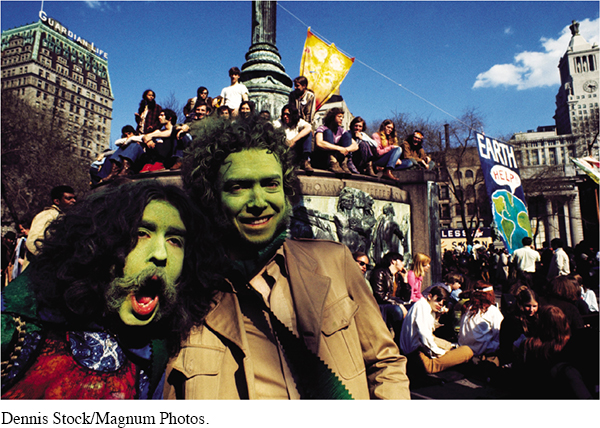The American Promise: Printed Page 827
The American Promise, Value Edition: Printed Page 749
The American Promise: A Concise History: Printed Page 855
Responding to Environmental Concerns
The oil crisis dovetailed with a rising environmental movement, which was pushing the government to conserve energy and protect nature and human beings from the hazards of rapid economic growth. Like the conservation movement born in the Progressive Era (see “Roosevelt and Conservation” in chapter 21), the new environmentalists sought to preserve natural areas for recreational and aesthetic purposes and to conserve natural resources for future use. Especially in the West, the post–
The new environmentalists, however, went beyond conservationism to attack the ravaging effects of industrial and technological advances on human life and health. The polluted air and water and spread of deadly chemicals attending economic growth threatened wildlife, plants, and the ecological balance that sustained human life. Biologist Rachel Carson drew national attention in 1962 with her best seller Silent Spring, which described the harmful effects of toxic chemicals such as the pesticide DDT. The Sierra Club and other older conservation organizations expanded their agendas, and a host of new groups arose. Millions of Americans expressed environmental concerns on the first observation of Earth Day in April 1970. The locally organized, grassroots events addressed a host of topics, including oil spills, water pollution, recycling, industrial waste, automobile emissions, and many more.
Responding to these concerns, Nixon built on efforts begun under Johnson. He called “clean air, clean water, open spaces . . . the birthright of every American” and urged Congress to “end the plunder of America’s natural heritage.” In 1970, he created the Environmental Protection Agency (EPA) to enforce environmental laws, conduct research, and reduce human health and environmental risks from pollutants. He also signed the landmark Occupational Safety and Health Act (OSHA), protecting workers against job-
